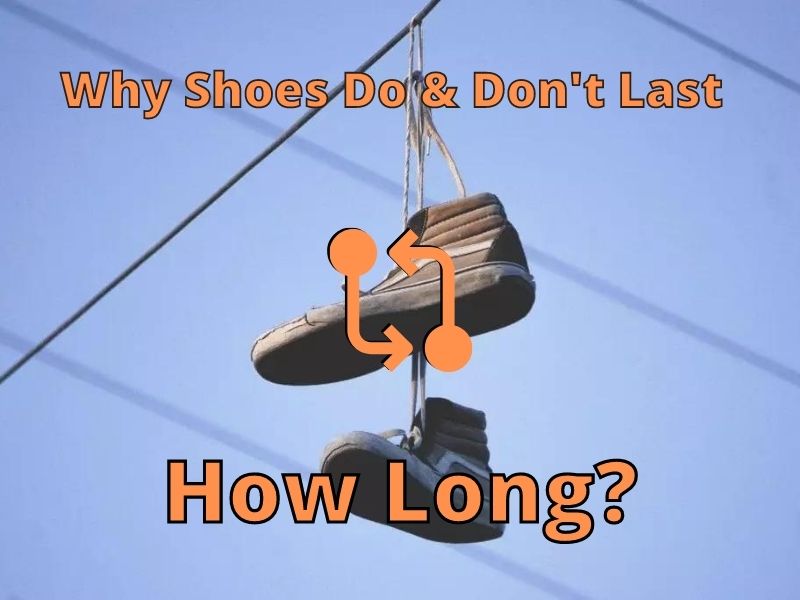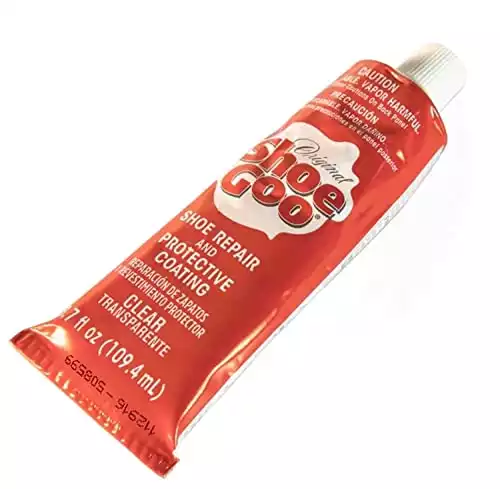I recently replaced my running shoes with a new pair because of joint pain when running. I decided to go with a new pair that has lots of cushioning. Now they are my favorite pair of shoes to wear.
You should replace your shoes with foam midsoles between 6-12 months with daily use. Leather shoes with replaceable soles can last 5 years or longer. Shoes should be replaced when they cause discomfort, impact joint health, get contaminated, or become a visual eyesore.
Some shoe owners will not get the most out of their shoe life because they only use their shoes a few times and then buy a new pair, while others neglect to retire their shoes even after it starts to affect their health. Choosing the best time to replace your shoes will keep you and your wallet happy.
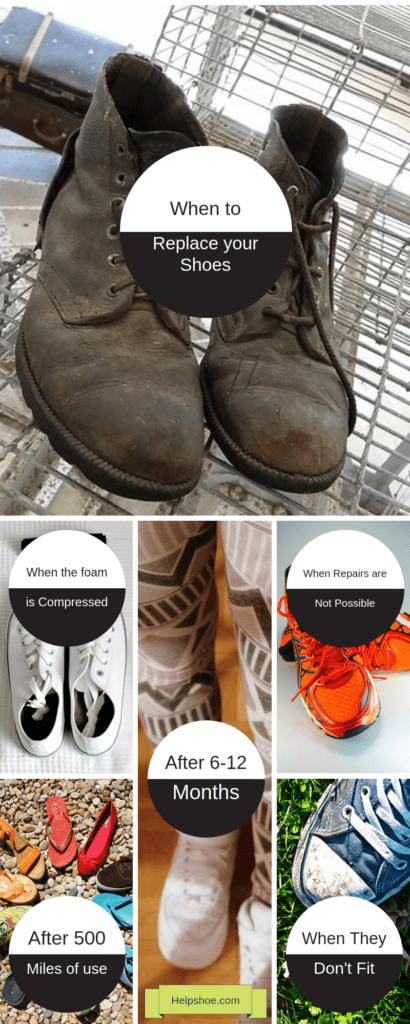
Shoe Lifespan And When To Replace
When it comes to most shoes, you’ll want to consider how long the sole of the shoes will last. Most soles can last for years if used infrequently.
For those using their shoes daily, you will likely need to replace your shoe somewhere between 6 – 12 months of use.
Why? Shoe midsoles compress and degrade over time (article). They will not support your foot the same way they are meant to after long, repeated daily use.
The rubber bottoms will also start to wear and expose the foam underneath, providing less traction and more slippage.
The average outsole might last between 300-500 miles. What you do with your shoes makes all the difference. When considering how to gauge the best time to replace your shoes, think in terms of how often your shoes are used each day.
Walking once a week for 5 miles will give your shoe a likely maximum lifespan of almost 2 years. If you walk 5 miles a day, then your shoes might last 3 months.
I recommend buying two pairs of the same shoe if your plan is to do a lot of walking. (See Link – Buying Two Pairs …)
If you wear dress shoes, your soles and upper can last for years when they are made of leather. You’ll need to consider how often they are used and how they feel on your feet over time.
A quality pair of dress shoes (article) worn once a week can likely last you 5-10 years with regular care. The same pair worn daily with regular care may last up to two years.
To get extra life out of your shoe, consider replacing the soles, but it may cost about $50-$100, depending on the type of work done.
Finally, think about buying newly released shoes. Shoes start to break down even on the shelves of the shoe store. The midsoles start to degrade between 1-5 years into storage. This means you may only get half the life of the shoe, about 250 miles worth.
In addition, shoe glues that hold the outsole onto the shoe may break down even quicker than 1-5 years.
If you are buying last year’s model, you are likely getting less mileage and the glue may start to weaken, allowing some shoes to separate from the midsole.
Ask the salesperson how long the shoes have been in storage or buy the newest release of the shoe you like. Some of the newer sole types claim to have special foam soles that degrade less and will last longer.
When you’re ready to replace your shoes, try on several shoes to check out how the soles feel and notice how stiff or soft they are. Sometimes, newer soles can be stiffer depending on the shoe’s purpose, so take that into consideration.
| Type Of Shoe | How Long It Lasts With Daily Use | Under Which Conditions |
|---|---|---|
| Running Shoes | 3-6+ Months (Depending On The Midsole And Sole) | Running 3-5 Days A Week |
| Skater Shoes | 1-4 weeks (For Upper) Up to 2-4 Months (For Soles) | Skater Who Skate Hard Each Day |
| Gym Shoes | 3-6+ Months (Depending on Midsole) | Regular Weight Lifting And Running |
| Leather Soled Shoes | 3 Months (Walking Outside) 12+ Months (Walking Only Inside) | Walking Outside Will Greatly Reduce The Length Of Sole Life. |
| Sneakers / Tennis Shoes | 6-12 Months | Daily Walking Inside and Out |
Replacing Shoe Heels and Soles To Get More More Milage
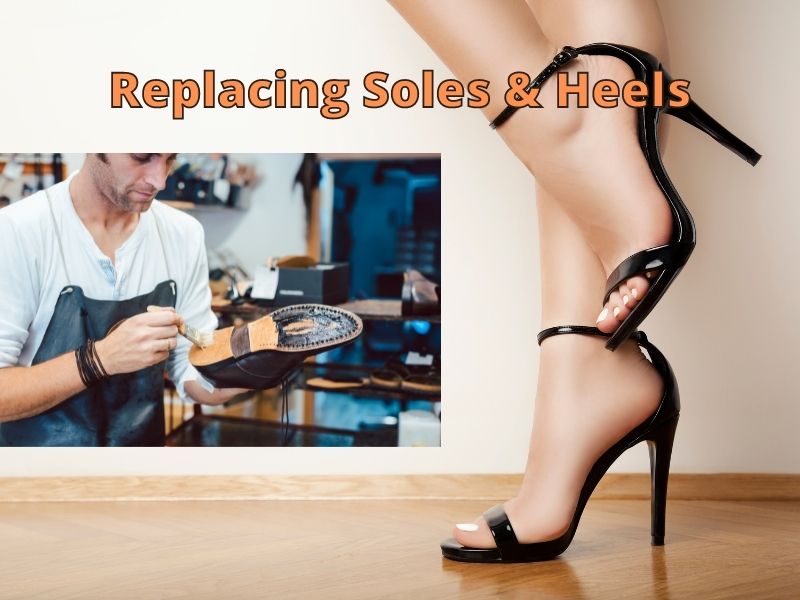
I have a great pair of shoes, but what if one day, the soles start to come apart? Should I get new shoes? If you’re looking to save money and you’re concerned about throwing away a good pair of shoes, then try repairing them.
A cobbler can attach a new heel tip, repair some high-heel parts, glue your seams together, and sew on a new rubber sole or leather sole. But, if you would like to (DIY) do it yourself, there are self-repair options available.
If you’ve used your shoes only occasionally but have had them for years, it’s likely the glue holding your shoes together has started losing their strength.
To reattach the sole of your shoe or to reattach the outer rubber sole to the midsole, try using some shoe glue. It’s probably one of the best ways to save lots of money.
Here are some options for you to try.
- Shoe glue can cost up to $15. A cobbler might run between $30 – $80. So, if you have the time and patience, this is an option for you.
- For high heels, the cost for (DIY) do-it-yourself heel tip replacement is about $15.
- You may also want to replace the rubber outer sole and heels on your dress shoes and this will cost you approximately $15 as well, although you will need to purchase glue in addition to the soles.
Some reasons to avoid self-repair are time constraints and the learning curve you’ll encounter as you work on repairing your shoes. If this is your first time, be prepared to make a mistake and try again.
Recognize that your efforts may not result in the outcome that you were looking for. You’ll likely need to do research and watch a couple of videos to get an idea of what is required and how long it takes.
If you still want to save your shoes, decide on expert repair or self-repair, taking into consideration which is your best option. You will have likely helped yourself by keeping those great shoes around for quite a bit longer.
Buying Two Pairs of Shoes Gets You Further
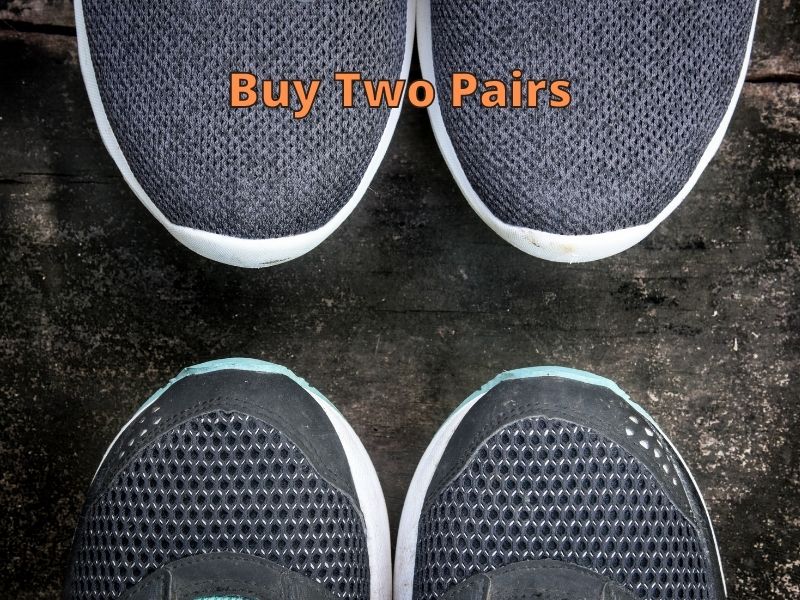
Are there benefits of buying two pairs of shoes that are the same? Yes! Here are just some of the benefits.
When I was purchasing running shoes, I read an article about the benefits of having two pairs of running shoes. I decided to buy two pairs because allowing the shoes to rest for about 48 hours helps the EVA (ethylene-vinyl acetate) foam to decompress somewhat.
This lengthens the time each shoe will need to be replaced. The foam compresses at a slower rate because they are allowed to decompress for a period. An added benefit is your shoes can dry out if moisture has accumulated and more impact absorption.
Buying two pairs of running shoes (article) will also help you avoid injury that is caused by running on the same type of sole repeatedly.
Research suggests that having two pairs of shoes, even if the shoes are the same, will reduce the risk of injury because of the slight differences between shoes.
You’ll also spend less time shopping and replacing your shoes. Buying two pairs of shoes of the same type will cut your decision-making time in half, so you don’t need to worry about which pair of shoes will be the next ones you want to purchase.
Be careful before you purchase.
- You may want to wait a couple of weeks before buying that second pair to be sure the first pair of shoes meets all of your needs.
- Then, when you have two pairs, you’ll be able to wait about a year or more before worrying about whether your shoes need to be replaced.
- Decide if you are committed to wearing these shoes. I remember buying running shoes and then not making the time to use them. I just hadn’t put in the commitment to run as I had intended.
- This can be a waste of time and money. Now that I am running consistently, I know I can buy two pairs without any problem. I know I will use them.
- Buy from a store that allows returns. Research how long the store accepts returns and what you feel will meet your needs.
- For example, REI will accept returns on shoes for up to a year if they are in good condition. Amazon.com accepts returns up to 30 days for a full refund.
When buying my running shoes, I bought one pair that worked well, and then soon after, I bought another type of running shoe.
This has helped me get experience with different types of shoes and helped my feet and joints stay protected a bit better. Why? The foam was allowed to expand a bit as I wore different shoes on different days.
Does Spending More On My Shoes Help?

Spending a bit more on your shoes can make a big difference if the quality is good. Better materials and better manufacturing make shoes worth the extra money if you use them regularly.
If you don’t want to replace your shoes too often, then spend some time researching reviews for the type of shoes you are looking for. This will prevent spending more time and money in the future.
I have found that when I buy in a hurry, I spend more because I end up with a shoe that just doesn’t work for me.
I tend to try to make the shoes work for me if I put in the effort to buy them. If the shoes seemed like they would work at the time of purchase, but after the trial period, they weren’t the best for my feet, I might end up losing money.
I end up spending money on sole inserts and new shoes or saying I will wear them later, and never do.
If I take the time to research, I find shoes that meet my needs and ones that cost less in the long run.
Look for signs that you’re getting a quality shoe.
- Quality shoes usually last longer.
- They are made of better materials for the job they’re designed to do.
- The new model for the current year (Amazon Link).
- Positive reviews, lots of purchases.
- A high rating on a shoe rating website.
Returning shoes can take a lot of time. You didn’t intend to use them to return and shop again. You won’t have to return, or worse, keep the shoes that aren’t working, for a loss of money.
Often, spending a little more money (article) can get you a better shoe that will cause you fewer complaints and make you feel happier. You might also take care of your shoes more since you put in more of an investment.
Thanks for visiting Helpshoe.com
References
Related Questions
How often should I replace my workout shoes?
Workout shoes may last a long time, depending on how often you are using them in your workout. With a regular workout schedule, 3-5 days a week, the foam sole will normally last about 3-6 months. Consider how often your foam soles are being compressed and how your feet are feeling when determining if your shoe needs to be replaced.
Do running shoes need to be replaced every three months?
If you are running 5 days each week, then you will need to replace your shoes every three months. Think of your shoes as having about a 400-mile lifespan. Think about how many miles you use them each week. Now divide that into 400, and you know how many weeks they will last. ![]()
Should I get an insole for my shoes so they will last longer?
One thing you might have considered is adding a new insole to make your shoes last longer. Yet, once the midsoles have degraded, an insole will not provide the support that your foot will likely need. Think of your shoes like tires; always lean on the side of caution.

